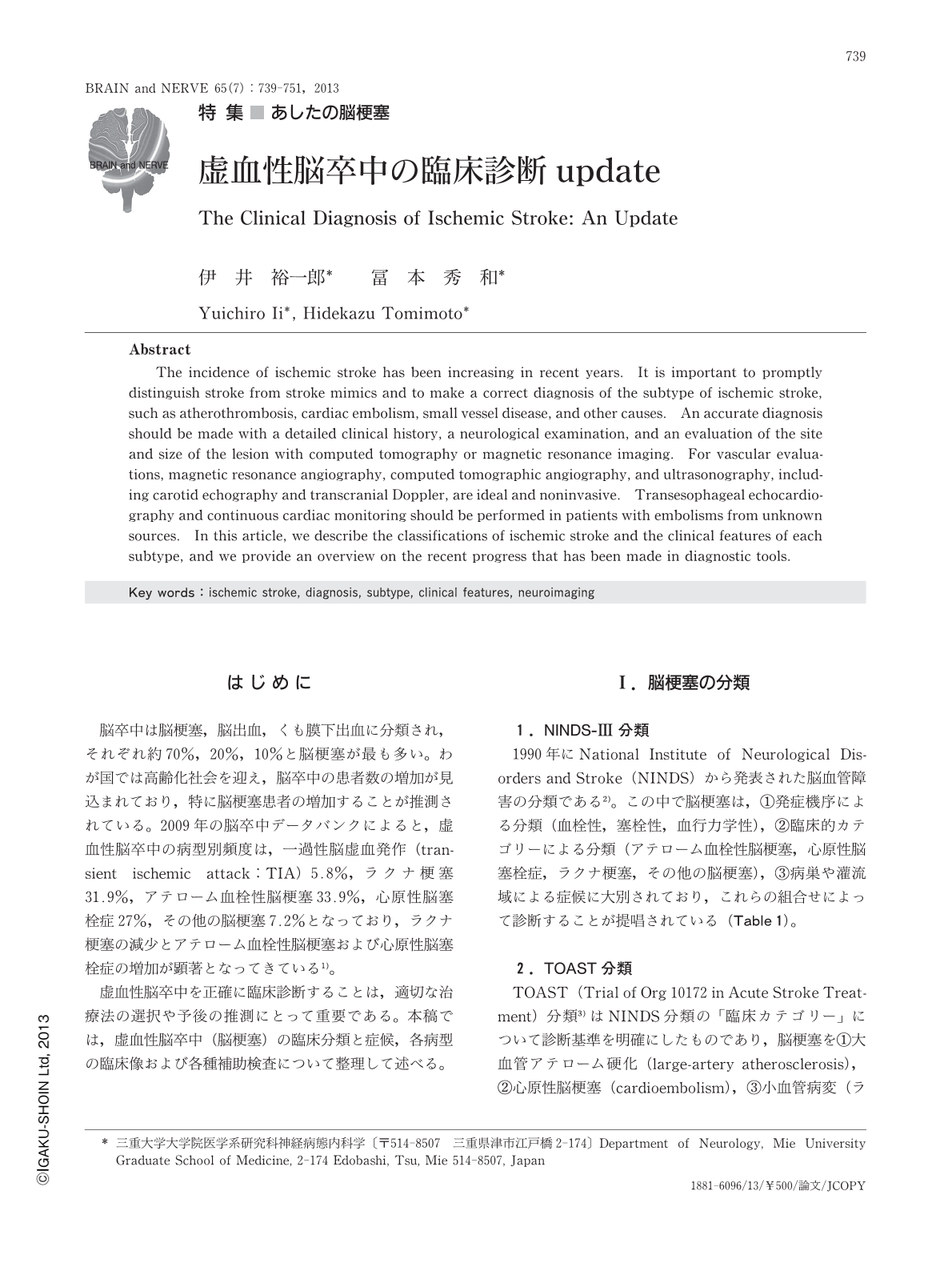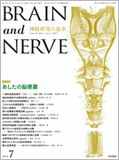Japanese
English
- 有料閲覧
- Abstract 文献概要
- 1ページ目 Look Inside
- 参考文献 Reference
はじめに
脳卒中は脳梗塞,脳出血,くも膜下出血に分類され,それぞれ約70%,20%,10%と脳梗塞が最も多い。わが国では高齢化社会を迎え,脳卒中の患者数の増加が見込まれており,特に脳梗塞患者の増加することが推測されている。2009年の脳卒中データバンクによると,虚血性脳卒中の病型別頻度は,一過性脳虚血発作(transient ischemic attack:TIA)5.8%,ラクナ梗塞31.9%,アテローム血栓性脳梗塞33.9%,心原性脳塞栓症27%,その他の脳梗塞7.2%となっており,ラクナ梗塞の減少とアテローム血栓性脳梗塞および心原性脳塞栓症の増加が顕著となってきている1)。
虚血性脳卒中を正確に臨床診断することは,適切な治療法の選択や予後の推測にとって重要である。本稿では,虚血性脳卒中(脳梗塞)の臨床分類と症候,各病型の臨床像および各種補助検査について整理して述べる。
Abstract
The incidence of ischemic stroke has been increasing in recent years. It is important to promptly distinguish stroke from stroke mimics and to make a correct diagnosis of the subtype of ischemic stroke, such as atherothrombosis, cardiac embolism, small vessel disease, and other causes. An accurate diagnosis should be made with a detailed clinical history, a neurological examination, and an evaluation of the site and size of the lesion with computed tomography or magnetic resonance imaging. For vascular evaluations, magnetic resonance angiography, computed tomographic angiography, and ultrasonography, including carotid echography and transcranial Doppler, are ideal and noninvasive. Transesophageal echocardiography and continuous cardiac monitoring should be performed in patients with embolisms from unknown sources. In this article, we describe the classifications of ischemic stroke and the clinical features of each subtype, and we provide an overview on the recent progress that has been made in diagnostic tools.

Copyright © 2013, Igaku-Shoin Ltd. All rights reserved.


